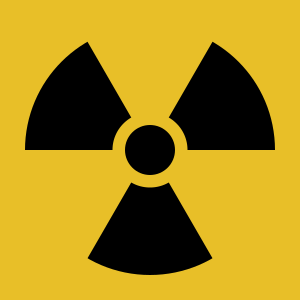Radiation Poisoning is a combination of many signs and symptoms which is a result of exposure to large amounts of ionizing radiation for a long period of time. Ionizing radiation contains electromagnetic waves that potentially produce large doses of free radicals which are highly destructive to the cells of the body by interfering cellular division, tampering cellular DNA and damaging healthy cells thus causing tissue damage. X-rays and gamma rays which are used for medical treatments give off this kind of radiation but toxicity only occurs when there is already large amount of ionizing radiation in the body. Non – ionizing radiation, on the other hand, such as light waves, microwave and radio waves, typically do not cause cellular damage. Another terms used for Radiation Poisoning include Acute Radiation Syndrome, Radiation Sickness or Radiation Toxicity.
Radiation Poisoning may be a result of radiation exposure either as a one – time excessive contact, known as Acute, or a chain of little exposures over a period of time, termed as Chronic. Radiation Poisoning is usually associated with acute exposure while chronic exposure is closely linked with delayed medical condition like cancer and early onset of aging.
The immediate intervention for radioactive exposure is to keep away from the site of radiation exposure and to keep a distance from other persons to prevent contamination. It is also important to remove you clothes and put them in a sealed container. Take a bath and wrap the body with a clean, soft blanket. These measures can be employed to prevent further transfer of radioactive waves to other individuals and reduces the risk of internal contamination by way of inhalation, ingestion or by entry through open wounds. This phase of radiation poisoning treatment is called decontamination.
One of the treatments of Radiation Poisoning includes potassium iodide. This is employed by doctors immediately before or after radiation exposure. This chemical compound is thought block radioiodine by filling iodine receptors sites thus facilitating elimination of radioiodine which can be harmful to tissues through the urine. Another chemical compound is the Prussian blue which is a kind of dye that binds with radioactive elements and facilitates faster elimination of these elements through the feces. As a result, lesser radioactive particles are absorbed by the cells. Like Prussian blue, Diethylenetriamine pentaacetic acid (DTPA) also binds to radioactive particles, specifically plutonium, americium and curium, then facilitating passing out of the body through the urine. The shorter period of time it stays in the body, the lesser chances of absorbing large amounts by the cells.
Supportive and palliative treatment of the signs and symptoms of Radiation Poisoning may include antibiotics for possible bacterial infections, pain relievers for headache, antipyretics for fever, antiemetic for nausea or vomiting and fluid replacement for dehydration.
Eventually, it may sound a cliché, but prevention is better than cure. To prevent Radiation Poisoning, avoid unnecessary exposure to radiation. If exposure is inevitable, strictly follow certain measures to protect yourself by using proper protective shields. Radiation exposure such that used for medical diagnosis and treatments must be minimized if not necessary.
Related articles
- What Can I Use to Combat Radiation Poisoning Answer: Potassium Iodide (vitanetonline.com)
- Are nuclear power plant workers at risk for radiation injury? (zocdoc.com)

